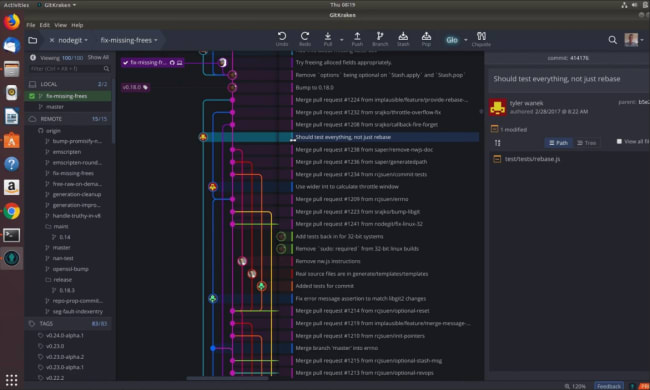Whether you are a newborn or a wizened deep-ocean octopod, each user will need to open, clone, or initialize a repo in GitKraken.
- Bitbucket Pipelines with Deployments lets you build, test and deploy with integrated CI/CD. Benefit from configuration as code and fast feedback loops. Secure your workflow. Know your code is secure in the Cloud with IP whitelisting and required 2-step verification. Restrict access to certain users, and control their.
- Add your /.ssh/idrsa.pub public key to your server (bitbucket.org, azure devops, github or w/e). Now when you do git fetch from terminal or do git fetch from Gitkraken, it should both work. Gitkraken will use your computers own ssh agent which we have configured to authenticate us.
- I just downloaded GitKraken to take a look at it and from what I can see it does not support connecting to a Bitbucket Server instance, nor even an arbitrary Git repository. Its Bitbucket integration redirects you to Bitbucket.org (a.k.a. Bitbucket Cloud), which is a separate thing altogether from a self-hosted Bitbucket.
Setup

With a GitKraken Boards Pro plan, you can restrict board access to those within your organization and manage all user accounts. Group users into teams so you can add/remove/assign entire teams, and when new team members join or leave, quickly add/remove them from all boards. Sign Up for Free. GitAhead makes navigating through thousands of commits a piece of.
The essential setup process includes:
- Installing GitKraken
- Creating an account and setting up your profile
Once this is complete, you are ready for your oceanic journey!
Projects in GitKraken
There are three ways to start a Git repository when working on a project:
- Open - Open a local Git repository already initialized and available locally.
- Clone - Clone a remote Git repository already initialized.
- Init - Create an empty Git repository or reinitialize an existing one.

Opening an existing project
GitKraken allows you to load your existing repositories and pick up where you left off. It's also useful for visualizing past work done.
If you're coming from a Git project you already have locally, navigate to File Open Repo to get started immediately in GitKraken.
Cloning an existing project
If your project is not on your local machine or you want a new copy, clone the project through File Clone.
This will then prompt you to open the newly copied project in GitKraken.
Initialize a new project

Bitbucket Vs Gitkraken
Starting a project in GitKraken is easy through File Init
All you need to do is fill out the fields and select for the magic to begin.
Input
- New repository path
.gitignoretemplate (optional)Automatically creates a
.gitignorefile in your working copy.License (optional)
- On init, GitKraken will create a
LICENSEfile in your repository. - Check out the Open Source Initiative or find out more about Choosing a License.
Output
Gitkraken Bitbucket Token
- A new initialized Git project at the specified repository path by creating a
.gitfolder. - The project is opened in GitKraken
- An 'Initial commit' on a
masterbranch containing a blankREADME.mdalong with a.gitignoreandLICENSE.mdif applicable.
GitKraken also allows initializing a repository directly to a remote Git hosting provider such as GitHub and Bitbucket.
Delete a repository
Gitkraken Bitbucket Tutorial
You may delete a repository by first navigating to the folder icon in the upper left corner of the GitKraken UI.
Then browse through your repo list and right-click on the repository you wish to delete from your local machine.
If you are unable to delete the repository, first make sure it is closed in GitKraken and then close any other applications which may be working with files in the repository. Restart GitKraken and try the delete again.
Deleting the repo from within GitKraken will only delete your local copy of the repository. If you wish to delete your remote repository, you will need to perform that action directly by logging into your remote hosting service (GitHub, GitLab, etc).
